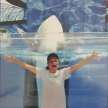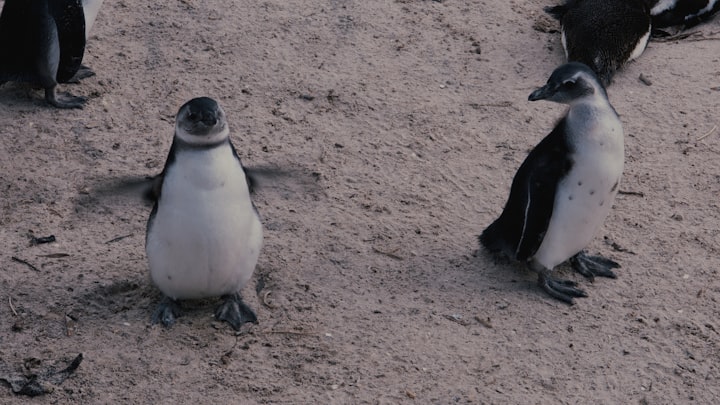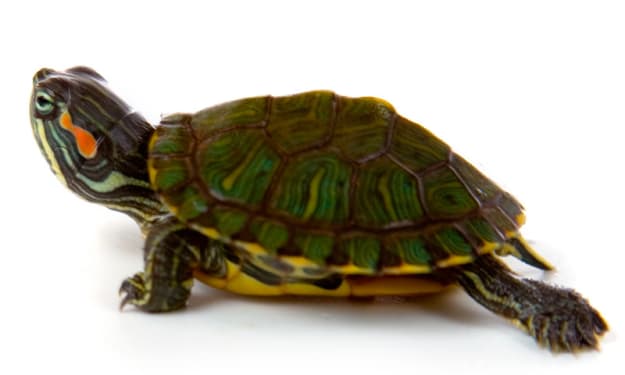Baby Walrus Rescued by Alaska SeaLife Center
The animal care team cares for an orphaned Pacific walrus calf in need.
On August 1st, 2023, a rescue team admitted a male Pacific walrus calf to the Alaska SeaLife Center’s Wildlife Response Program. Workers found him on Alaska’s North Slope, about four miles from the Beaufort Sea. Normally Pacific walruses live almost only near the western coastline, which makes the sighting unusual for the species. When observers first spotted him, they noticed a “walrus tail” on the tundra close to the road where they found him. Nobody knows how the calf arrived inland.
During the first two years of their lives, walrus calves depend on their mothers for survival, and since there were no adult walruses within the vicinity, the wayward calf could not survive on his own. Not unless human intervention was involved. So, that was when the U.S. Fish and Wildlife Service approved a coordinated effort between the Alaska SeaLife Center, Alaska Clean Seas, and ConocoPhillips to provide the calf shelter and move him to a warehouse. There, the rescue teams monitored him overnight before transporting him to Seward, via, a plane provided to the teams by ConocoPhillips, Alaska.
At around 3 P.M. on August 1st, the calf and the transport team safely arrived at the Seward airport. From there, they carefully moved the almost 200-pound calf, who’s thought to be a month old, into a wildlife response van, which then, brought him to the facility where his rehabilitation began.
Upon his arrival, they gave him an initial exam before the veterinary team focused on their major concerns. The calf was suffering from a combination of malnutrition, dehydration, and a cloudy eye. While bloodwork confirmed the dehydration diagnosis, it also showed that he may also fight an infection.
The animal care staff is currently providing him with 24-hour care, which is more demanding than with most marine mammals they’ve cared for through the Center’s 25-year history. Walruses are highly tactile and social animals that receive near-constant care from their mothers over the two-year period during which they depend on them. To emulate the maternal care his mother would’ve provided him, the animal care staff is providing him “round-the-clock” cladding to ensure he remains calm and develops healthily. As usual with rescued walrus calves, which adapt quickly to human care, the team reports that he’s responding well to the formula that they’re feeding him.
Just three days ago, on August 7th, the Center’s Instagram page informed followers that aside from having to adjust his formula slower than they hoped, he appears to be dealing with an extensive infection. In response, the team has adjusted feeds and treatments to help address these concerns. In addition, the team is also consulting with expert colleagues to continue providing him with the best care possible. Once again, he’s still responding well to treatment but still has a lot of health conditions to overcome.
When one asks whether they can release a walrus calf back into the wild if they recover, the answer is, unfortunately, no. Walrus calves depend on their mothers for the first two years of their lives. During this time period, mother walruses show their calves how and where to forage along with other survival skills. Because of this length of time, the intensity of patient care for walrus calves admitted as patients, and the difference between the rehabilitation and natural environments, it’s nearly difficult to impossible to teach them how to survive following release.
Currently, the calf can’t have any public visitors. However, as his condition continues to improve, he might move to an area that offers limited public viewing. If this all continues to go well, the Alaska SeaLife Center will send out additional announcements when he could have public visitors. For now, fans can follow the calf’s progress on the Center’s social media pages.
The calf is the first walrus rescue in four years and only one of ten in the Center’s 25-year history.
About the Creator
Jenna Deedy
Zoo and Aquarium Professional, Educator, Cosplayer, Writer and B.A. in Psychology whose got a lot to share when it comes to animals, zoos, aquariums, conservation, and more.
Instagram: @jennacostadeedy






Comments
There are no comments for this story
Be the first to respond and start the conversation.